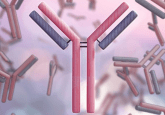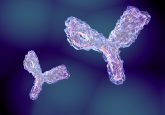New method to identify non-small-cell lung cancer biomarker
Researchers have developed a new assay to identify anaplastic lymphoma kinase gene rearrangements.
Anaplastic lymphoma kinase (ALK) is a biomarker of non-small-cell lung cancer (NSCLC). Until recently, demonstrating ALK activity in NSCLC has been hindered by the technical and interpretative bioanalytical challenges of the current analytical methods: fluorescent in situ hybridization and immunohistochemical (IHC) methods. A team of researchers, led by Hiroaki Nitta (Ventana Medical Systems, AZ, USA), has addressed this issue by incorporating a nonendogenous hapten 3-hydroxy-2-quinoxaline and tyramide amplification into a diaminobenzidine and horseradish peroxidase-based assay to increase IHC sensitivity as well as developing a brightfield IHC–in situ hybridization combination assay.
The new IHC detection system enabled the researchers to interpret the staining with greater sensitivity than previous methods, and could detect even low levels of ALK in cells. The development of the brightfield IHC–in situ hybridization combination assay allowed for the visualization of ALK gene parallel to ALK protein status in single cells.
The determination of ALK status in NSCLC, as well as other cancer biomarkers, can allow for the development of personalized medical plans. The improvement of this assay allows for simultaneous determination of gene structure and protein expression and thus a more sensitive determination of ALK status, which may allow medical staff to accurately identify patients who will benefit from ALK-targeted therapy.
The authors state, “This tool for simultaneously assessing both ALK protein expression (IHC) and ALK gene rearrangement (in situ hybridization) in NSCLC will be valuable for research on the mechanisms driving ALK-dependent malignancies and as a model of a new diagnostic approach for identifying patients who might benefit from ALK-targeted therapies. More generally, it also provides proof-of-concept for the development of new methodologies for the simultaneous assessment of gene structure and protein-expression status in a single cell”.
The next steps of the research will include the development of the methods for the clinic.
Sources: Nitta H, Tsuta K, Yoshida A et al. New Methods for ALK Status Diagnosis in Non-Small-Cell Lung Cancer: An Improved ALK Immunohistochemical Assay and a New, Brightfield, Dual ALK IHC-In Situ Hybridization Assay. J Thorac Oncol. 8(8), 1019–1031 (2013); Researchers find two new methods to determine ALK status.






